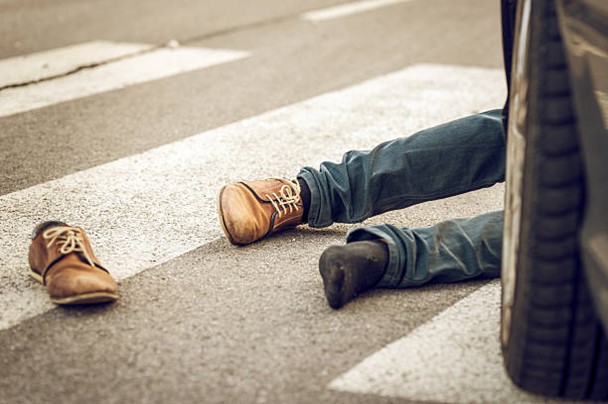
Pedestrian safety should never be compromised by poor infrastructure. Unfortunately, insufficient lighting is one of the most overlooked but deadly hazards contributing to pedestrian accidents—especially at night. When crosswalks, intersections, or sidewalks are poorly lit, it becomes much harder for drivers to see walkers and much easier for a tragic collision to occur.
At Buckeye Law Group, we advocate for injured pedestrians and hold negligent drivers—and in some cases, municipalities—accountable for accidents caused by dangerous lighting conditions.
The Role of Poor Lighting in Pedestrian Accidents
Pedestrian accidents are significantly more likely to occur at night, and poor lighting is often to blame. Here’s why:
- Reduced visibility – Without proper streetlights, drivers may not see pedestrians crossing until it’s too late.
- Increased reaction time – Poor lighting means drivers have less time to react to someone stepping off a curb or into a crosswalk.
- Higher risk of jaywalking – In some areas, dark or unlit sidewalks and intersections may cause pedestrians to cross in unsafe places.
According to the National Highway Traffic Safety Administration (NHTSA), nearly 75% of pedestrian fatalities happen after dark, and many of these occur in areas with inadequate lighting.
Who May Be Liable?
While the driver is typically the primary party at fault in pedestrian collisions, other parties may share liability when poor lighting is a contributing factor:
- Municipalities or cities that fail to maintain streetlights
- Construction companies that remove or damage lighting without proper precautions
- Property owners who allow unsafe conditions near walkways or crosswalks
A skilled pedestrian injury attorney can help determine all liable parties and pursue the appropriate legal action.
What to Do After a Pedestrian Accident Involving Poor Lighting
If you’ve been injured while walking in a poorly lit area, it’s critical to:
- Seek immediate medical attention
- Take photographs of the lighting conditions
- Collect witness statements if possible
- Contact a personal injury attorney to protect your rights
At Buckeye Law Group, we conduct thorough investigations, including lighting audits, scene reconstructions, and expert consultations to prove the role of poor visibility in your case.
If you’ve been hurt due to a pedestrian accident involving poor lighting, don’t face the aftermath alone—reach out to Buckeye Accident Attorneys for a free, no-risk consultation.
Can You File a Claim If You Were a Passenger in a Crash?
Passengers Have Strong Legal Rights After a Car Accident Many people assume that passengers have fewer rights in an accident — but legally, it’s often the opposite. Passengers are almost
Hit by a Distracted Driver? Here’s What You Need to Know
Understanding How Distracted Driving Causes Serious Crashes Distracted driving has become one of the leading causes of preventable car crashes in the U.S., and Ohio is no exception. Whether the
Surgical Injuries During Hysterectomy: Was It Malpractice?
Hysterectomy is one of the most commonly performed surgeries for women in Ohio and across the country. While it is usually safe, errors during the procedure can lead to life-changing
How to Prove Negligence in Women’s Health Cases
Women’s health cases—especially those involving OB/GYN care, fertility treatment, childbirth injuries, or gynecological surgery—require an extra level of medical skill and attention. When providers fail to act responsibly, the consequences
Filing a Lawsuit for Missed or Delayed Diagnosis in Ohio
When doctors fail to diagnose a serious illness in time, the results can be devastating—especially when early detection could have meant the difference between recovery and tragedy. In Ohio, patients
Why Your Doctor Didn’t Listen—And How to Fight Back
One of the most frustrating and dangerous experiences a patient can face is being ignored by their doctor. Whether you reported symptoms that were dismissed, asked for tests that were
Suing for Delayed Cancer Diagnosis: What Families Should Know
When cancer goes undetected due to medical negligence, it doesn’t just affect the patient—it impacts the entire family. Missed or delayed diagnoses often mean more invasive treatments, reduced survival chances,
How Late Detection Impacts Cancer Treatment Outcomes
When cancer is caught early, patients often have a wide range of treatment options and a significantly better chance of recovery. However, when doctors fail to detect cancer in its
When Doctors Miss the Warning Signs of Spinal Infections
Spinal infections are among the most dangerous and time-sensitive medical conditions a patient can face. When caught early, most can be treated successfully with antibiotics or minor surgical intervention. But
Legal Help for Victims of Delayed Epidural Abscess Diagnosis
An epidural abscess is a serious infection that forms in the space between the bones of the spine and the protective membranes surrounding the spinal cord. It is a medical
